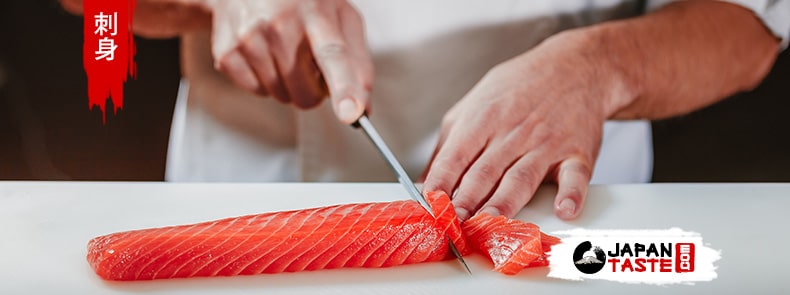Sashimi “刺身” is a great classic of Japanese cuisine. This dish is basically slices of raw fish cut more or less thinly depending on the species. The sashimi is a dish in its own right too often assimilated as a sushi. Perhaps because it is also eaten with wasabi and soy sauce or shoyu.
- Sashimi, an exceptional Japanese dish
- Which fish for sashimi?
- Variations of sashimi
- Side dishes with sashimi
Sashimi, an exceptional Japanese dish
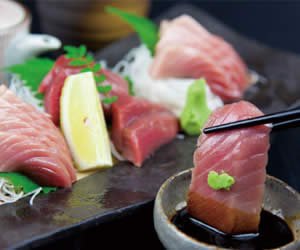 Many people still think wrongly that Japanese people eat a lot of sushi and other sashimi but it is not true. Indeed, in Japan these foods are very expensive and therefore remain occasional. Some Japanese people eat it daily but it is because they work as fishermen or near a port. But here we will talk about sashimi prepared by Japanese chefs. Becoming a sushi master is not improvised and requires a lot of knowledge to acquire and mastery in the cutting of different fish and other shellfish. It requires no less than ten years to have this status! This is one of the reasons why this dish is so expensive. Another factor to consider is the quality and freshness of the product. Fresh fish restaurants go daily to tsukiji in Tokyo, the largest fish market in the world.
Many people still think wrongly that Japanese people eat a lot of sushi and other sashimi but it is not true. Indeed, in Japan these foods are very expensive and therefore remain occasional. Some Japanese people eat it daily but it is because they work as fishermen or near a port. But here we will talk about sashimi prepared by Japanese chefs. Becoming a sushi master is not improvised and requires a lot of knowledge to acquire and mastery in the cutting of different fish and other shellfish. It requires no less than ten years to have this status! This is one of the reasons why this dish is so expensive. Another factor to consider is the quality and freshness of the product. Fresh fish restaurants go daily to tsukiji in Tokyo, the largest fish market in the world.
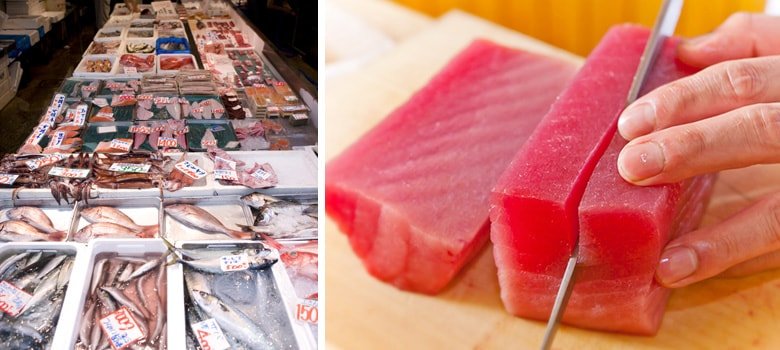
Here, the impressive choice of species on the stalls, and the freshness of the catch is unparalleled. Some products are worth huge sums of money that restaurateurs are willing to pay to prepare the best sushi or sashimi
possible. Combine exceptional products and know-how, and you get a divine dish. The cut of the sashimi is studied for each fish, each part. Japanese knives are much thinner than Western knives, the one dedicated to sashimi is very long, it is sharpened on one side to cut precisely the fish.
Which fish for sashimi?
As a rule, we talk about fish only, but shellfish are also used in the preparation of sashimi. We can even find beef or horse sashimi! But let’s stay focused on fish. The most common in Japan is undoubtedly the tuna. It is consumed in huge proportions and not only in sashimi. There are different kinds of tuna and all of them are appreciated and develop very particular flavors.
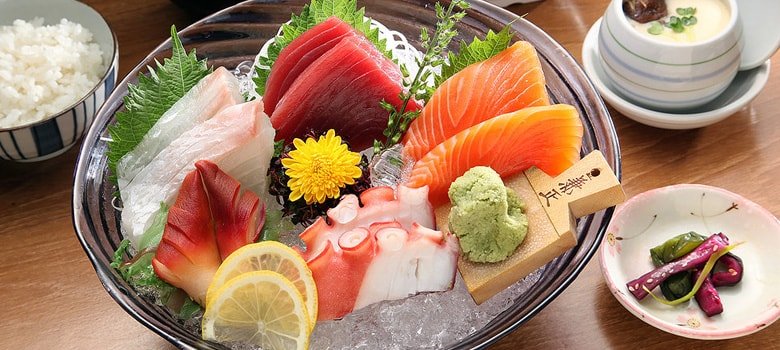
In France, the fish most used for sashimi is salmon. In Japan, although it is present, it is only one fish among the others:
- prawns
- flounder
- mackerel
- scallops
- octopus
- sea bream
- crab
- sea urchin etc…
The list is very impressive and contains some rare species of shellfish unknown in France.
Variations of sashimi
1 Although sashimi is actually always thinly sliced fish, there are different ways to prepare it or at least serve it. The most common is similar to what we know in France, which is to arrange thin slices in a harmonious and aesthetic way on a chosen plate. The whole is generally decorated with leaves of shiso and daikon and gari (pickled ginger).

2 Another way is to present the dish with the fish in its entirety. The chef keeps the head and tail of the fish and in a way reconstitutes the body with sashimi. This way is called “姿 造り” sugata-zukuri. Japanese people tend to say that it is more natural to present the dish like this. 3 Finally, a last way to serve the sashimi is to lift the fillets and slice it while still alive to serve it with the heart still beating. This requires a lot of dexterity, as the fish must not be killed. This preparation is called “生きず栗” ikizukuri.
Personally I don’t adhere to this last practice yet still common in Japan. Some variants of ikizukuri consist in helping yourself on the animal. Indeed, if you feel like it, you can order just a fillet for example. The chef will then take the desired fish, lift the fillet and put the fish back in the aquarium while waiting for the next order. It is easy to understand why this practice is forbidden in many countries. In video it is more telling, attention sensitive soul abstain:
Some restaurants have split the difference by offering to catch your own fish in a large aquarium and then prepare it for you. But this one is killed before being prepared which is in my opinion more natural…
The accompaniments with the sashimi
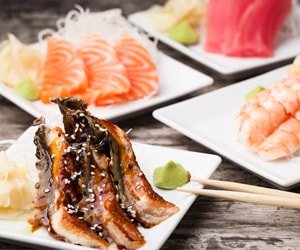 Drinks
Drinks
If you are in a sushi-ya, you can eat them with a traditional miso soup. We can also offer you green tea or cold or warm sake cold or lukewarm. If you are in an izakaya, you can prefer a cold japanese beer with some edamame.
Sauces and vegetables
Sashimi is eaten with Japanese chopsticks that you dip in soy sauce and a little wasabi. You will also find daikon, shiso leaves, white cabbage, carrot, cucumber, gari… these allow you to refresh your palate between each bite of fish to enjoy the next sashimi.
The best sashimi we have tasted all come from Japan. Sashimi may seem simple to make at home but we rarely play the game because the cutting technique is very difficult to acquire. When we finally taste sashimi prepared by a Japanese chef, we realize the huge difference that the technique makes.


